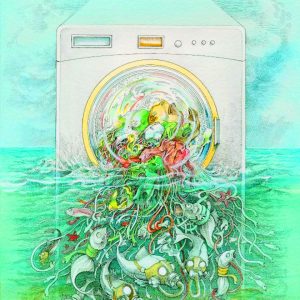“Today, zip code is still the most potent predictor of an individual’s health and well-being” (Environmental Health News). In the 1900s, white people discriminated against BIPOC from purchasing houses in their white neighborhoods. This led to segregated neighborhoods. Landfills and highways directly through these neighborhoods, homeless shelters leading to increased pollution in groundwater and low air quality resulting in poor school systems and healthcare systems. This is an example of environmental injustice.
What is environmental justice? How can the environment be just or unjust?
Environmental injustice is when some communities have a higher level of environmental risk than other communities in society. Environmental injustice occurs when some communities have more environmental burdens due to racial and socioeconomic injustices. BIPOC neighborhoods faced increased risk of poor health from the polluted air and water resulting in a greater risk of environmental injustice. According to Scientific America, “environmental justice concerns are more prominent along race/ethnicity lines, rather than measures of poverty.” Environmental justice is still a huge problem because people of color are disproportionately affected by increased exposure to toxic chemicals, lead poisoning, unsafe workplaces, water contamination and climate change. This is expanded by not having access to healthcare, lack of good jobs, and increased crime.
In BIPOC neighborhoods, health is drastically affected due to environmental hazards. There is a great example of this from the movie Erin Brockovich (highly recommend watching this!) based on a real life story where a small town lived near a plant and they used a hazardous chemical, Chromium 6 that seeped into the town’s groundwater. This BIPOC community began having major health problems and took years to find out that it was related to the plant’s use of chromium 6 and years to get compensation. This is an example of the environmental injustice this BIPOC community faced from a big corporation that would have not happened in a big city full of wealthy residents.
Environmental injustice is relevant inside and outside of the United States. I recently learned that at the end of World War II, the industrial age ramped up and we began producing more waste and we needed someplace to ship it off too. Most of the waste ended up being shipped off to South America, Southeast Asia, and Africa. Third World nations accept the waste in exchange of money. This has been deemed “garbage imperialism” or “toxic colonialism.” This leaves these nations having a larger environmental risk, environmental injustice, due to waste polluting groundwater, and having a toxic environment.
What can I do to combat environmental injustice?
In environmental activism, we need to focus climate justice and racial equity at the center of our discussion. We need to bring those most affected by environmental injustice into these discussions. Lastly, we need to vote for politicians and policies that will advocate for environmental justice for all.
Citations
Environmental Justice Organisations, Liabilities and Trade.” Environmental Justice Organisations Liabilities and Trade, www.ejolt.org/2013/02/environmental-injustice/.
“A Look at Environmental Justice in U.S.A. Today.” Scientific American, Scientific American, 20 Jan. 2014, www.scientificamerican.com/article/a-look-at-environmental-justice-in-usa-today/.
“5 Ways Businesses Can Take Action to Reduce Environmental Racism.” Greenbiz, www.greenbiz.com/article/5-ways-businesses-can-take-action-reduce-environmental-racism.
Ranniger, Gwen. “The Father of Environmental Justice.” EHN, EHN, 26 Feb. 2021, www.ehn.org/environmental-justice-2646185608/the-father-of-environmental-justice.

